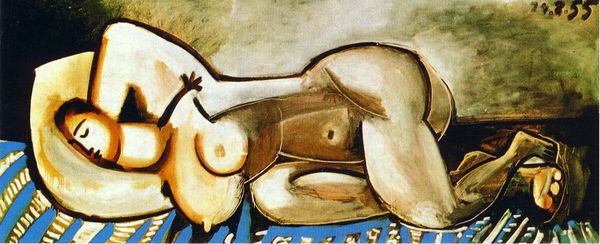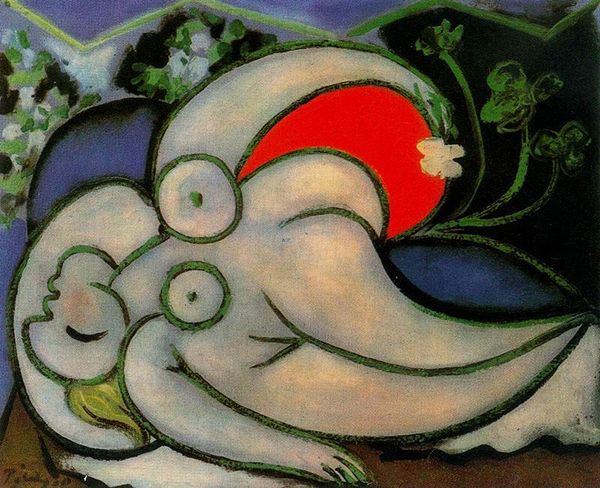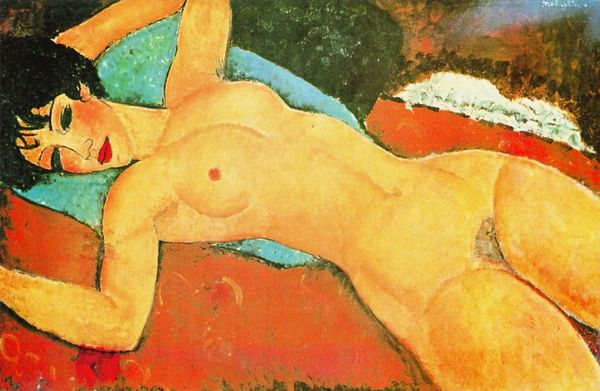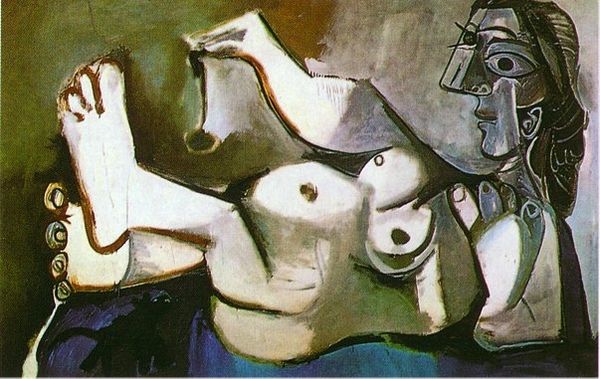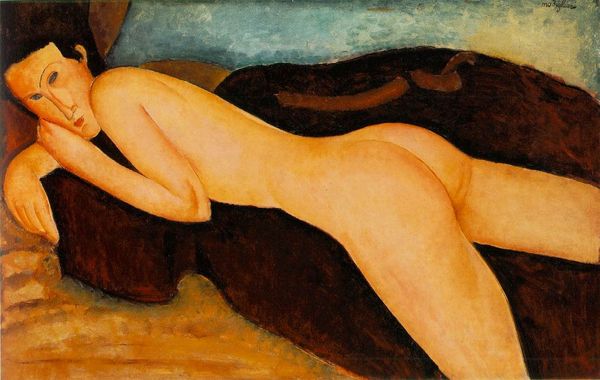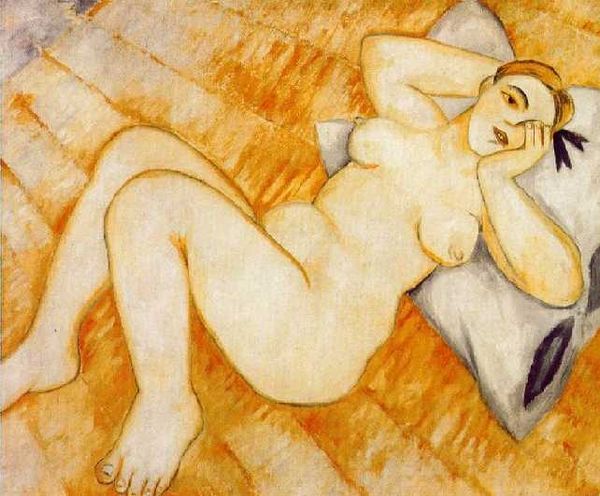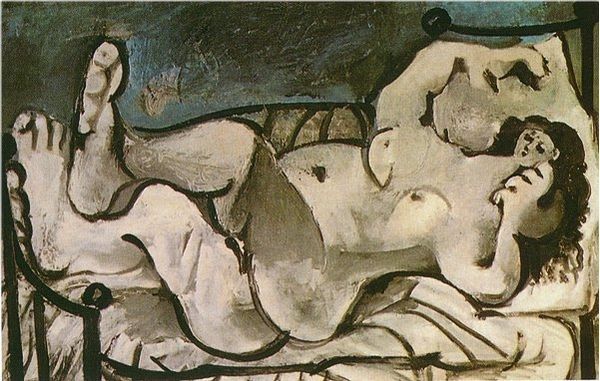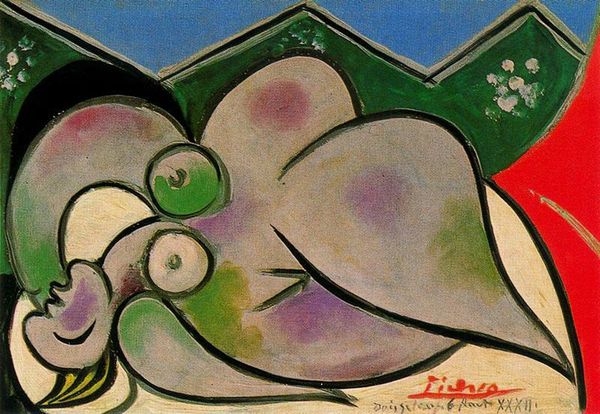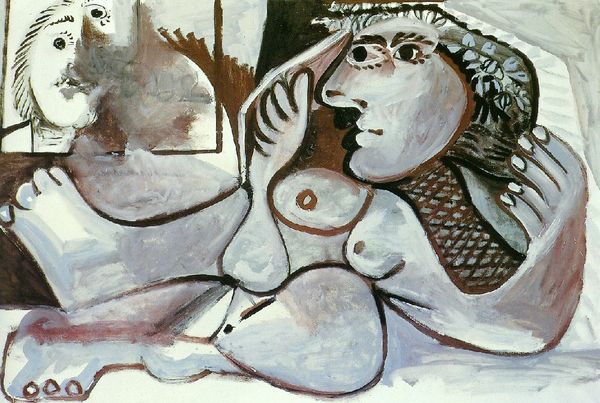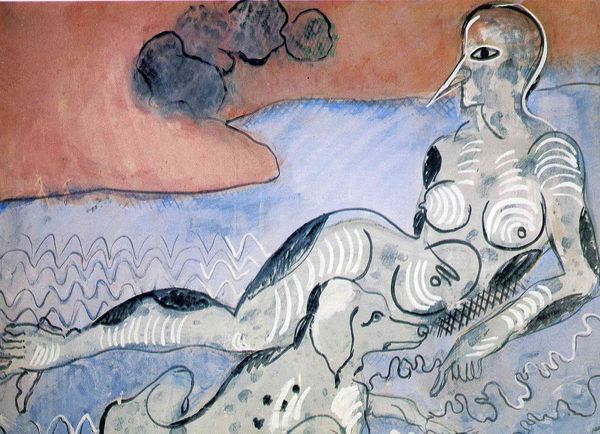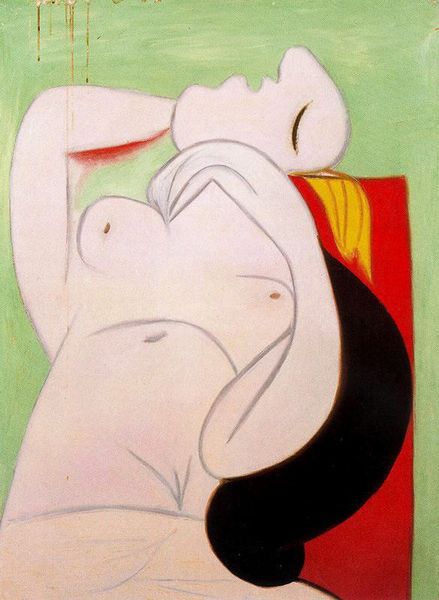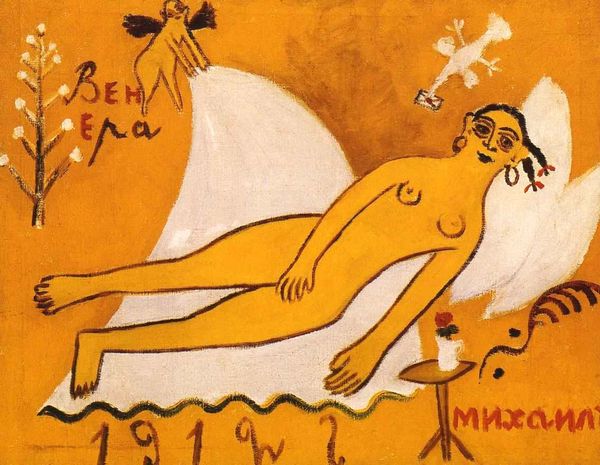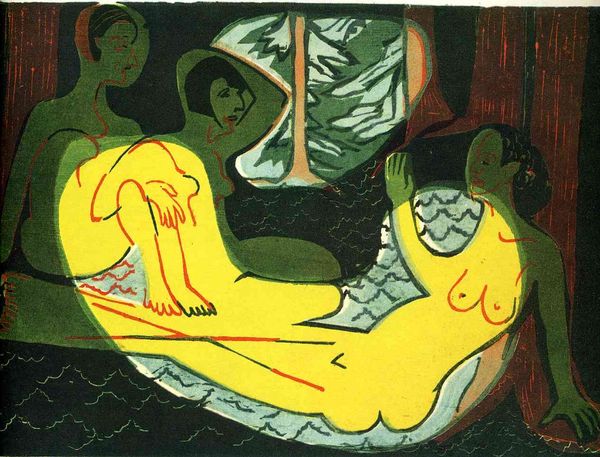
#
abstract painting
#
female-nude
#
neo expressionist
#
acrylic on canvas
#
animal portrait
#
facial portrait
#
chaotic composition
#
portrait art
#
fine art portrait
#
expressionist
#
digital portrait
Copyright: Pablo Picasso,Fair Use
Curator: This is Pablo Picasso's "Lying Naked Woman (The Voyeurs)," painted in 1955. It’s an oil on canvas, showcasing one of his many explorations of the female form. What strikes you initially? Editor: It's unnerving. There's a vulnerability in the pose, almost childlike, juxtaposed with these jarring, almost aggressive angles and perspectives. The voyeurs implied in the title add a layer of discomfort, like we're intruding on something deeply personal. Curator: Precisely. The implied observers – those shadowy faces lurking in the background paintings – intensify that voyeuristic sensation. Consider the post-war context. Picasso’s nudes from this period often evoke feelings of unease, perhaps mirroring the anxieties and disrupted realities of the time. How do you interpret the way Picasso has deconstructed the figure? Editor: The fragmentation, the flattened planes – it feels like a battle between objectification and emotional truth. It's as if he's grappling with how the female body is seen versus how it's felt, or experienced by the subject herself. I am also impressed by his capability to put various themes such as voyeurism and objectification into a single work. It gives us an overall perspective on a period of great innovation and revolution. Curator: The way he twists perspective isn't just about aesthetic experimentation. It’s a radical confrontation with traditional artistic ideals, isn’t it? It breaks down any pretense of passive beauty and asks us to confront the complexities of representation. Think of how galleries operated then versus now: it was quite an act to paint the feminine form in such a liberated way, so publically. Editor: Absolutely. And it invites us to question our own gaze, to acknowledge the power dynamics inherent in viewing art, especially the nude. Do we perpetuate the voyeurism implied, or do we engage with the vulnerability exposed? Curator: I agree, it is more of a question, of our moral implications towards not only the painting but ourselves too. That tension, that self-awareness he instills in us, is what makes it a work that continues to provoke and resonate so powerfully. It asks something from us. Editor: It’s a fascinating work, and a great way to look into a dark side of beauty. Thank you.
Comments
No comments
Be the first to comment and join the conversation on the ultimate creative platform.
